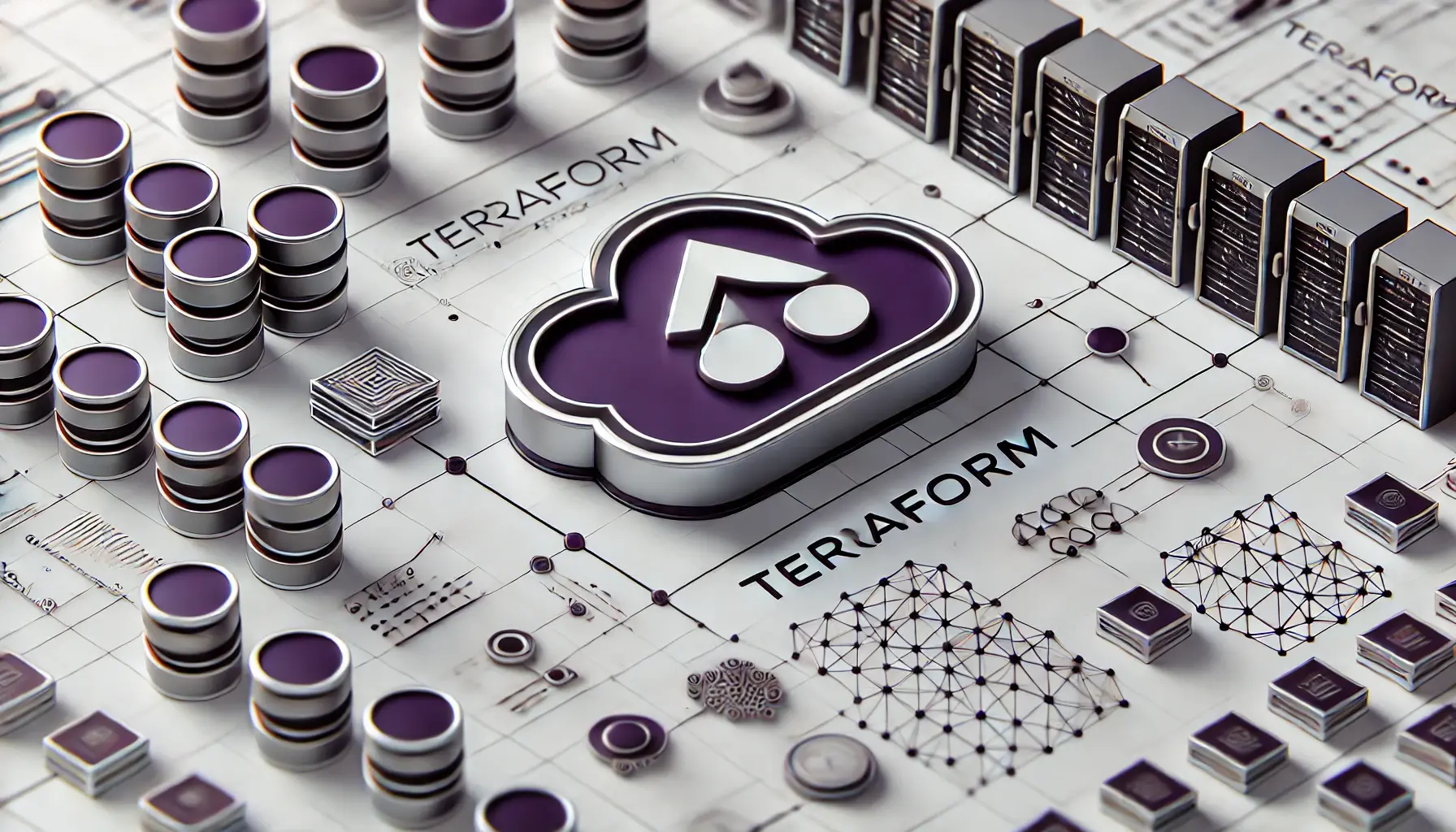What is Terraform?

Terraform, developed by HashiCorp, is a powerful Infrastructure as Code (IaC) tool that allows you to define and provision data center infrastructure using a high-level configuration language. It enables you to manage and automate your infrastructure consistently, reproducibly, and scalable. This article provides a detailed exploration of Terraform, aimed at enhancing your understanding of its functionalities, benefits, and practical applications, particularly in DevOps and IT.
Understanding Terraform
Terraform's core concept revolves around "infrastructure as code," where infrastructure is defined in code format and managed through version control systems, ensuring traceability and collaborative development. Terraform supports many cloud providers, including AWS, Azure, Google Cloud, and many others, making it a versatile tool for managing multi-cloud environments.
Key Features of Terraform
Declarative Configuration
Terraform's declarative configuration lets you specify the desired state of your infrastructure. Unlike imperative approaches that require step-by-step instructions, declarative configuration focuses on the result. This simplifies infrastructure management and reduces the risk of human error.
Execution Plans
One of Terraform's standout features is its ability to generate execution plans. When you change your configuration, Terraform creates a plan outlining the actions required to achieve the desired state. This plan provides a clear overview of what will be added, changed, or destroyed, allowing you to review and approve the changes before they are applied.
Resource Graph
Terraform constructs a dependency graph of all resources defined in your configuration. This graph enables Terraform to determine the correct order of operations and parallelize tasks where possible, optimizing the efficiency of the provisioning process. Dependencies are automatically handled, ensuring that resources are created or destroyed in the correct sequence.
State Management
Terraform maintains the state of your infrastructure in a state file, which is essential for tracking the resources it manages. The state file acts as a source of truth, enabling Terraform to understand the current status of your infrastructure and plan updates accordingly. Remote state management is also supported, allowing collaboration and shared state storage across teams.
Modular Architecture
Terraform supports modularity, allowing you to create reusable modules for common infrastructure patterns. Modules encapsulate resource configurations, promoting best practices and reducing duplication. By using modules, you can streamline the management of complex infrastructure components and promote consistency across your environment.
Terraform with AWS
Terraform with AWS becomes an invaluable tool for automating the deployment and management of AWS resources. Terraform AWS Provider, which includes pre-built modules for various AWS services, simplifies integrating Terraform with AWS. You can define your AWS infrastructure using HCL, and Terraform will handle the provisioning of services like EC2 instances, S3 buckets, RDS databases, VPCs, and more.
Terraform's modularity and state management capabilities are particularly beneficial in AWS environments. Modules allow you to create standardized templates for common configurations, such as VPC setups or security group rules. Terraform's state management ensures that changes are tracked accurately, preventing drift between your configuration and the deployed infrastructure.
Example: Deploying an EC2 Instance with Terraform
To illustrate Terraform's capabilities with AWS, consider a simple example of deploying an EC2 instance. Below is a basic Terraform configuration to accomplish this:
provider "aws" {
region = "us-west-2"
}
resource "aws_instance" "example" {
ami = "ami-0c55b159cbfafe1f0"
instance_type = "t2.micro"
tags = {
Name = "ExampleInstance"
}
}
This configuration, the aws_instance resource is defined, specifying the AMI ID, instance type, and tags. Terraform will use this configuration to provision an EC2 instance in the specified AWS region.
Benefits of Using Terraform
Consistency and Reproducibility
Terraform's declarative approach ensures that your infrastructure is consistently and reproducibly managed. You can version control your configurations, enabling you to track changes, revert to previous states, and collaborate effectively with your team.
Scalability
Terraform's ability to manage complex dependencies and parallelize tasks makes it highly scalable. Whether you're managing a few resources or a large-scale multi-cloud environment, Terraform can handle the provisioning and configuration efficiently.
Automation and Efficiency
By automating the provisioning and management of infrastructure, Terraform reduces the manual effort required and minimizes the risk of errors. This increases efficiency and allows your team to focus on higher-value tasks.
Flexibility
Terraform's support for multiple providers and modular architecture provide flexibility in managing diverse environments. Within a single configuration, you can define infrastructure for different cloud providers, on-premises environments, or hybrid setups.
Conclusion
Terraform is a powerful tool that brings infrastructure as code to life, offering a declarative approach to infrastructure management, robust state management, and modularity. Its integration with AWS and other cloud providers enhances its versatility, making it an essential tool for modern DevOps practices. By adopting Terraform, you can achieve consistent, scalable, and automated infrastructure management, empowering your team to deliver high-quality software efficiently. Embrace Terraform to streamline your infrastructure processes and stay competitive in the fast-evolving world of IT.